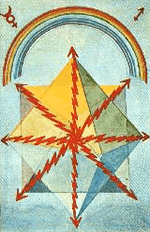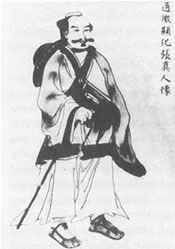
Dharmapatta Sutta
Buddhist Proverbs from 100 BCE
Chapters 1-4, Verses 1-59
I. Twin Verses, Mind, Anger and Hatred, Discernment, Practice, Contrary Ways, Contrasting Pairs, Yamakavagga Verses 1-20
II. Vigilance, Watchfulness, Earnestness, Diligence, Zeal, Self-Control, Joy, Nirvana, Appamadavagga Verses 21-32
III. The Mind, Thoughts, Cittavagga Verses 33-43
IV. Flowers, Blossoms, Things of the World, The Flowers of Life, The Fragrance of Good Deeds, Pupphavagga Verses 44-59
Chapters 5-8, Verses 60-115
V. Fools, Evil Fruit, Ambition, The Childish Person, Balavagga Verses 60-75
VI. The Wise Man (Pandita), The Skilled Person, The Wise, Panditavagga Verses 76-89
VII. Infinite Freedom, The Venerable (Arhat), The Accomplished Person, The Arahant, Arahantavagga Verses 90-99
VIII. Better Than a Thousand, Thousands, Sahassavagga Verses 100-115
Chapters 9-12, Verses 116-166
IX. Good and Evil, Avoid Evil Deeds and Do Good, Consequences of Evil, Detriment, Papavagga Verses 116-128
X. Don't Punish or Kill, Don't Inflict Pain on Others, Overcome Desires, Train Yourself,
Avoid Violence, Evil Returns Evil, Dandavagga Verses 129-145
XI. Beyond Life, Old Age, Broken Down House, Illness, Death, Jaravagga Verses 146-156
XII. Self-Possession, Self Control, Propriety, Duty, Oneself, The Self, Attavagga Verses 157-166
Chapters 13-16, Verses 167-220
XIII. The World, Illusions, Neglect, Practice, Lokavagga Verses 167-178
XIV. The Buddha, The Awakened, Restrained, Unbound, Refuge, Buddhavagga Verses 179-196
XV. Happiness, Being at Ease, Bliss, Follow the Wise, Sukhavagga Verses 197-208
XVI. Affection, Pleasing, Sorrow, Attachments, Piyavagga Verses 209-220
Chapters 17-20, Verses 221-289
XVII Guarding One's Character , Daily Efforts, Controlling Emotions, Anger, Kodhavagga Verses 221-234
XVIII Impurities, Faults, Ignorance, Envy, Malavagga Verses 235-255
XIX The Righteous , True Sages, Wise Elders, Monks, The Just, Dhammatthavagga Verses 256-272
XX The Eightfold Path, Impermanence, Meditation, Death, The Path, Maggavagga Verses 273-289
Chapters 21-24, Verses 290-359
XXI Disciples of the Buddha, Contemplations, Forest Solitude, Miscellaneous, Pakinnakavagga Verses 290-305
XXII Woeful State , Sinfulness, The Results of Evil, Hell, Nirayavagga Verses 306-319
XXIII Elephant, Self-Training, Fellowship, Nagavagga Verses 320-333
XXIV Cravings , Bondage, Uprooting Evil, Weeds, Tanhavagga Verses 334-359
Chapters 25-26, Verses 360-423
XXV Refine Conduct, Bhiksu, Calm the Mind, The Five, The Monk, Bhikkhuvagga Verses 360-382
XVI A Brahmin, A Buddha, An Enlightened Person, The Holy Man, Brahmanavagga Verses 383-423
Introduction
Bibliography
Links
Resources
Chapter Topics (1-26)
Notes
General Subject Index

























